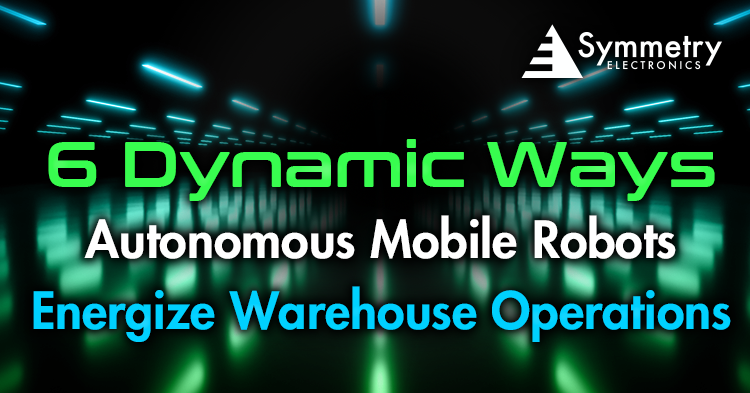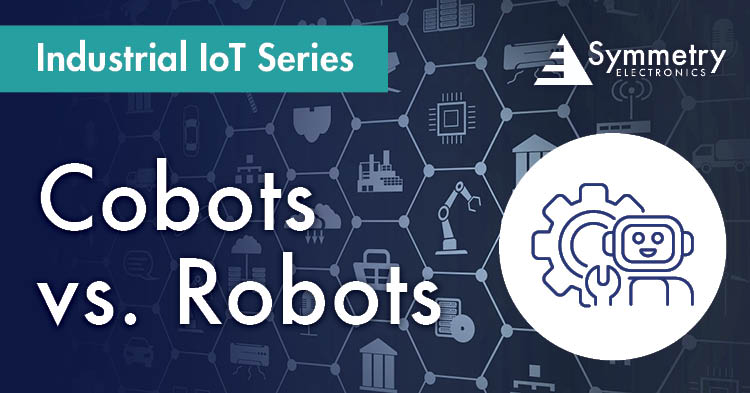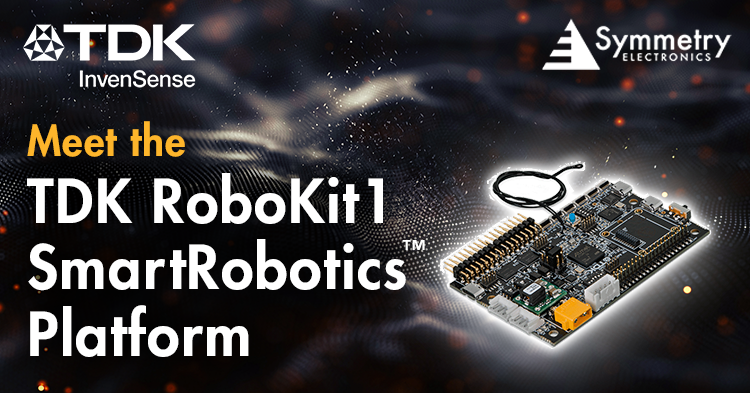- Home
- Symmetry Blog
- 6 Dynamic Ways Autonomous Mobile Robots Energize Warehouse Operations
6 Dynamic Ways Autonomous Mobile Robots Energize Warehouse Operations
About Jari Haiston

When it comes to warehouse management, autonomous mobile robots (AMRs) are emerging as game-changers. AMRs bring an elevated level of efficiency, safety, and adaptability to warehouse operations. As evidenced by the substantial market growth projected by Arizton, from $8.65 billion in 2022 to an anticipated $23.69 billion by 2028, boasting a remarkable CAGR of 18.29% -- it’s clear that the recognition of AMR benefits is quickly gaining momentum.
Defining Autonomous Mobile Robots
An autonomous mobile robot, or AMR for short, is a type of robotic system that operates without direct human intervention to perform tasks in various environments, such as warehouses, factories, hospitals, and more. Unlike traditional industrial robots, which are often fixed or programmed to operate within confined spaces, AMRs are designed to navigate autonomously in a dynamic environment. AMRs typically utilize a combination of sensors, cameras, and advanced algorithms to perceive their unstructured surroundings, plan optimal paths, and interact with their environment.
AMRs are capable of tasks like material handling, transportation, inventory management, and surveillance to offer organizations with increased flexibility, efficiency, and adaptability in various applications.
Top 6 Benefits of Autonomous Mobile Robots (AMRs) In Warehouses
The trend in front of AMR integration in warehouse and industrial environments can be attributed to the wide range of dynamic benefits they offer. The top six benefits of AMRs in warehouses represent a significant leap forward in operational efficiency and workplace safety. As one of the main modern warehouse management strategies in the industry today, AMRs are ushering in a new era of automation and optimization through streamlining processes, meeting demand, and much more.
1. Advanced Path Planning and Navigation
Utilizing sophisticated algorithms, AMRs employ Simultaneous Localization and Mapping (SLAM) techniques to generate real-time maps of warehouse environments. These maps facilitate efficient route selection, minimizing congestion and collision risks while optimizing material flow.
2. Edge Computing and Real-Time Decision Making
Equipped with onboard computing capabilities, AMRs process data locally, making real-time decisions without relying on central servers. This edge intelligence enhances adaptability, ensuring AMRs can instantly respond to dynamic warehouse scenarios.
3. Sensor Fusion and Perception
By integrating various sensors such as LiDAR, cameras, and ultrasonics, AMRs accurately perceive their surroundings. Sensor fusion combines data from multiple sources, enabling precise obstacle detection, object recognition, and collision avoidance, ensuring safe navigation in any environment.
4. SWARM Intelligence and Collaboration
Inspired by natural swarm behavior, AMRs communicate with one another, sharing information about tasks, routes, and obstacles. This collaborative approach optimizes resource allocation and task distribution, enhancing warehouse efficiency by dynamically adapting to demand fluctuations.
5. Predictive Maintenance and Self-Healing
AMRs monitor their own health using predictive maintenance algorithms. They detect anomalies (e.g., motor vibrations, battery degradation) and proactively schedule maintenance or self-repair. This proactive approach reduces downtime and prolongs the lifespan of AMRs, ensuring uninterrupted warehouse operations.
6. Integration with Warehouse Management Systems (WMS)
AMRs seamlessly interface with WMS platforms, allowing bidirectional communication for real-time task assignment, status updates, and inventory synchronization. This tight integration streamlines warehouse processes, ensuring AMRs align with broader operational goals.
Develop Your Own AMR with Solutions Now Available at Symmetry Electronics
If you’re a developer or enthusiast interested in engineering your very own AMR solution, now is the time to strike while the iron is hot. While the AMR market is clearly growing, 80% of warehouses lack any form of automation. That means, the landscape is rich with opportunity, and Symmetry Electronics has everything you need to develop a state-of-the-art AMR.
The u-blox XPLR-HPG-2 stands out as an excellent choice for AMR designs due to it’s high precision GNSS (HPG) capabilities. With cm-level accuracy, robust communication modules, and a dual-core MCU, the XPLR-HPS-2 empowers AMRs to navigate efficiently and deliver reliable performances in dynamic warehouse environments.
The TDK InvenSense RoboKit1 SmartRobotics™ Platform offers an ideal solution for AMRs due to its ultra-low noise, exceptional relative accuracy, and ultra-low power consumption. Additionally, its integration of sensors like a 6-axis IMU, barometric pressure sensor, ultrasonic Time of Flight (ToF) sensors, and motor controller simplies robotics engineering and accelerates development.
MediaTek’s Genio 1200 EVK is ideally suited for AMR designs due to its cutting-edge performance in edge processing, multimedia capabilities, and multitasking OS. Its excellent power efficiency and suitability for fanless enclosure designs also make it a compelling option for AMR applications.






-(1).jpg)
